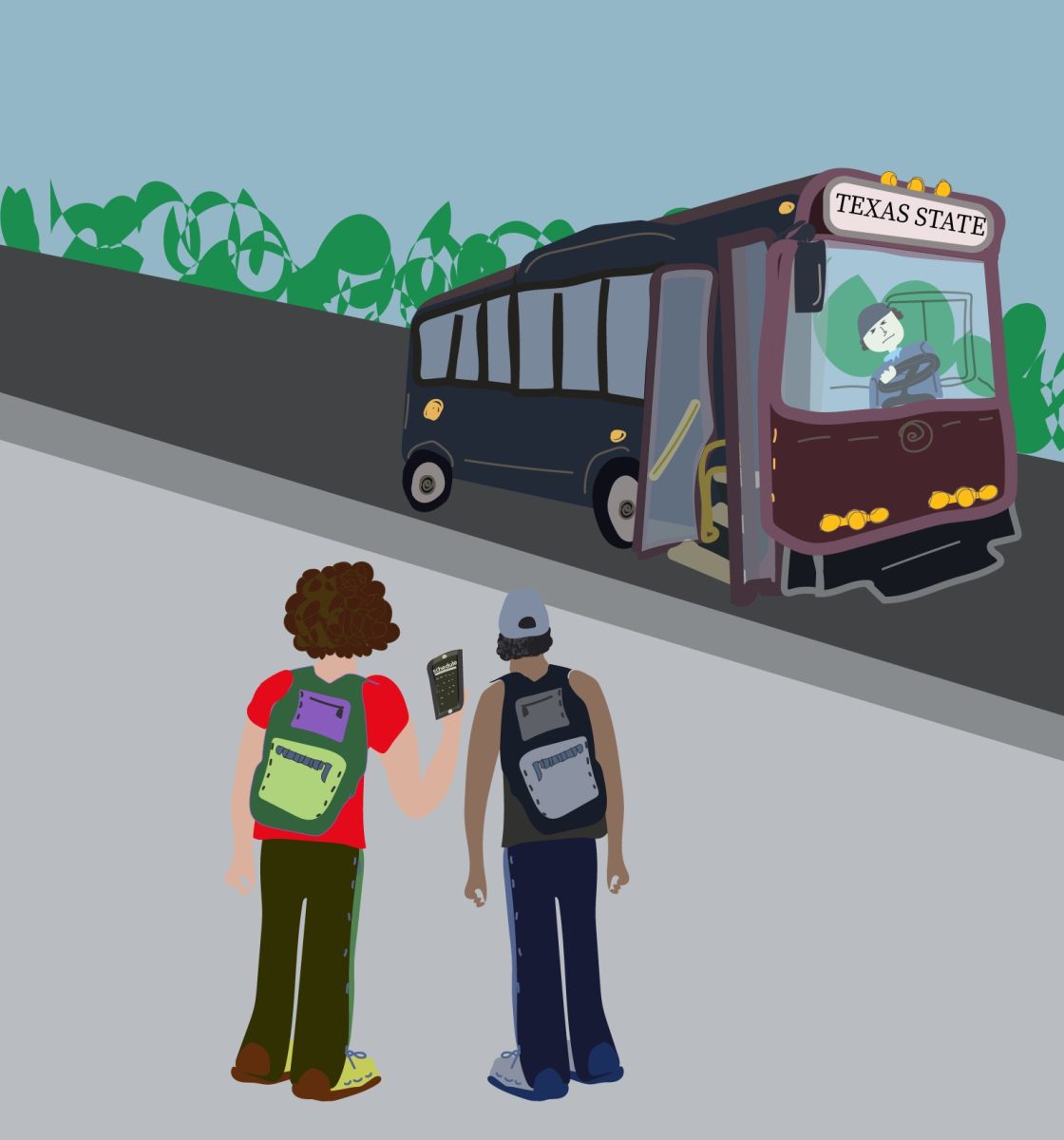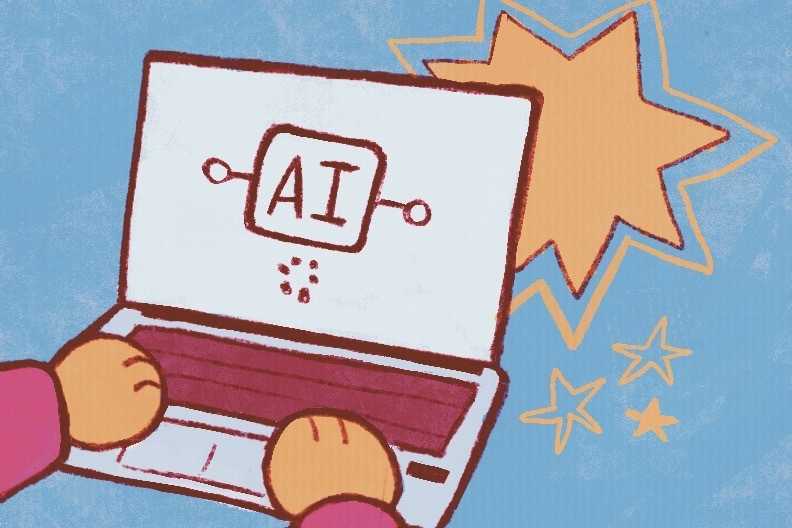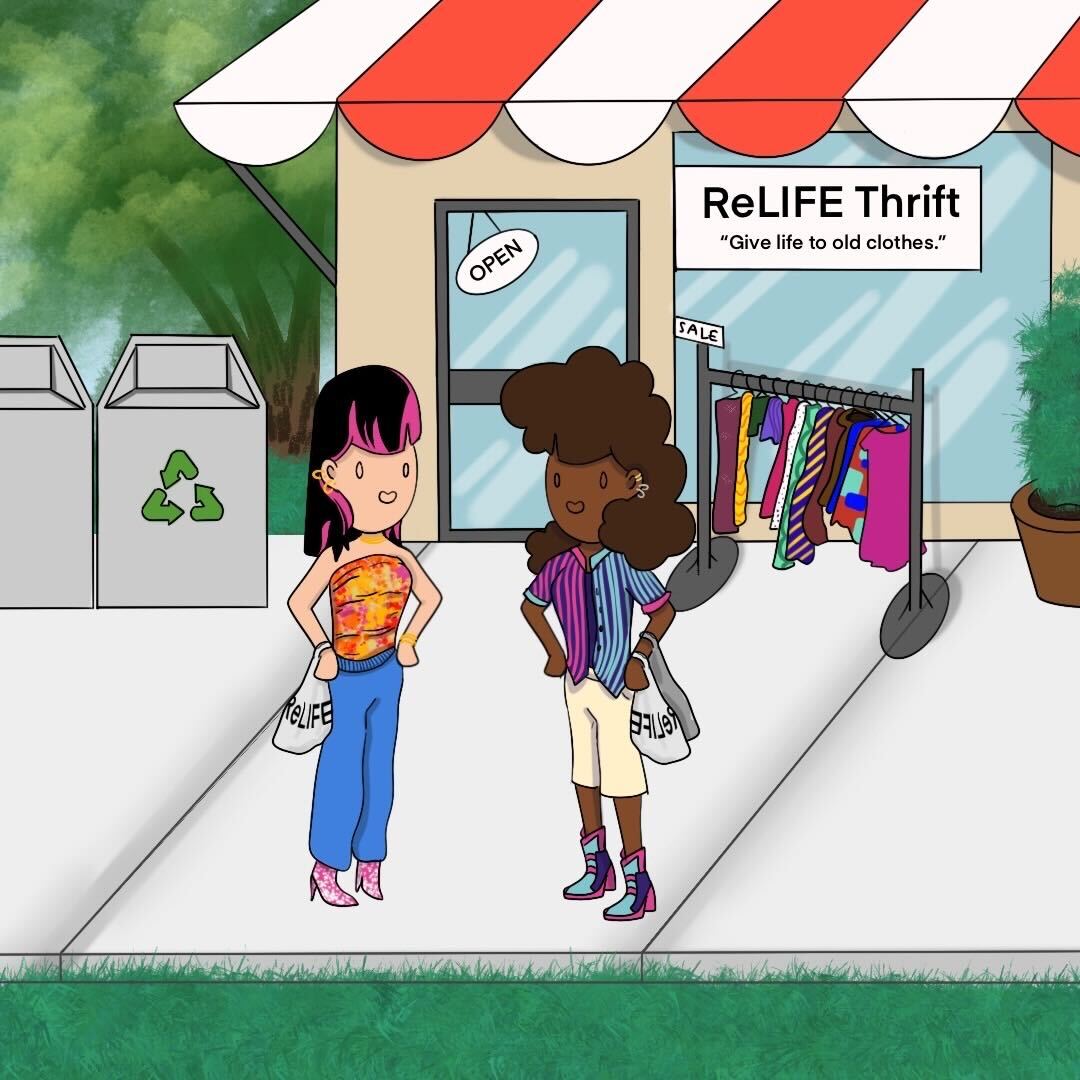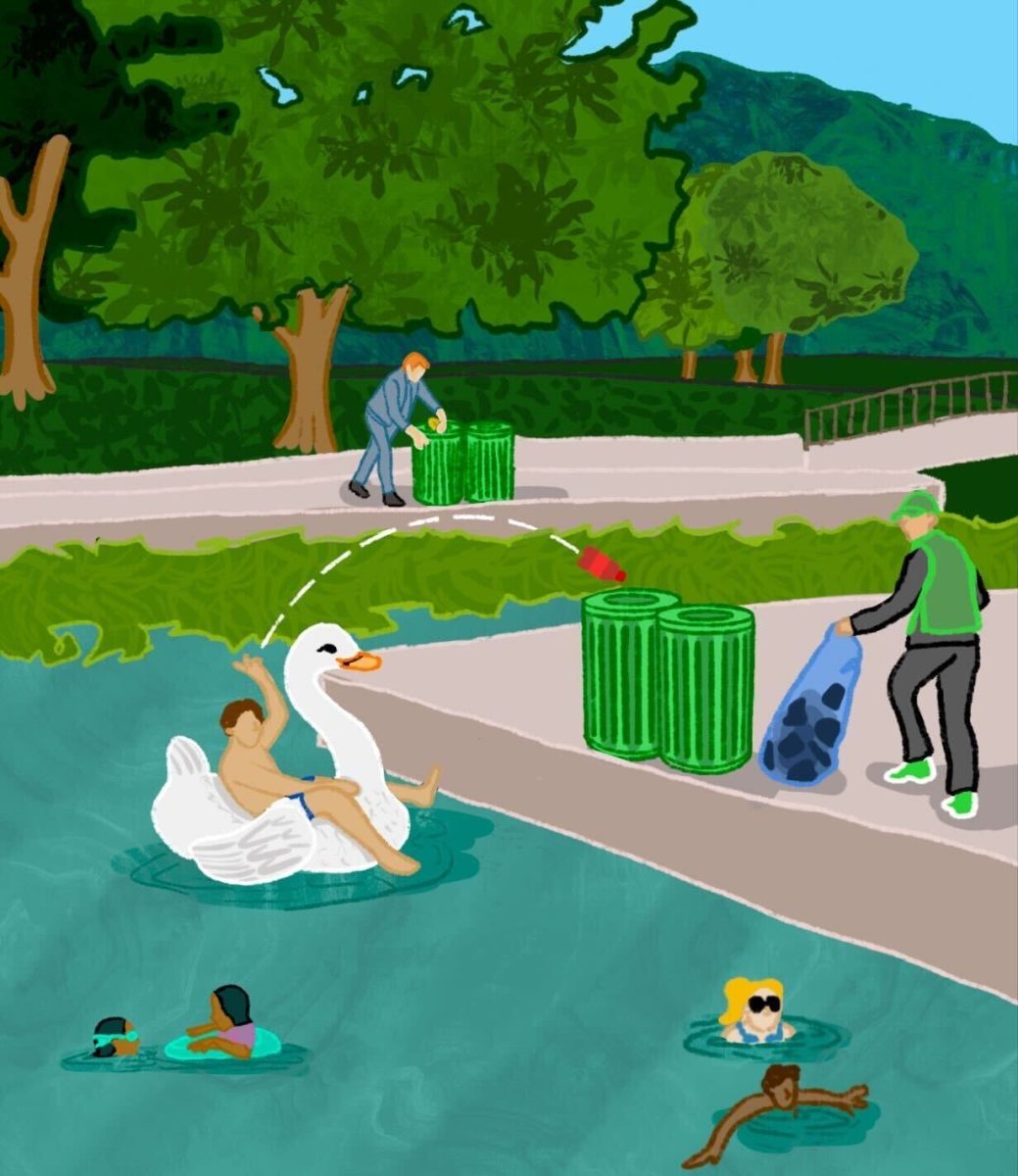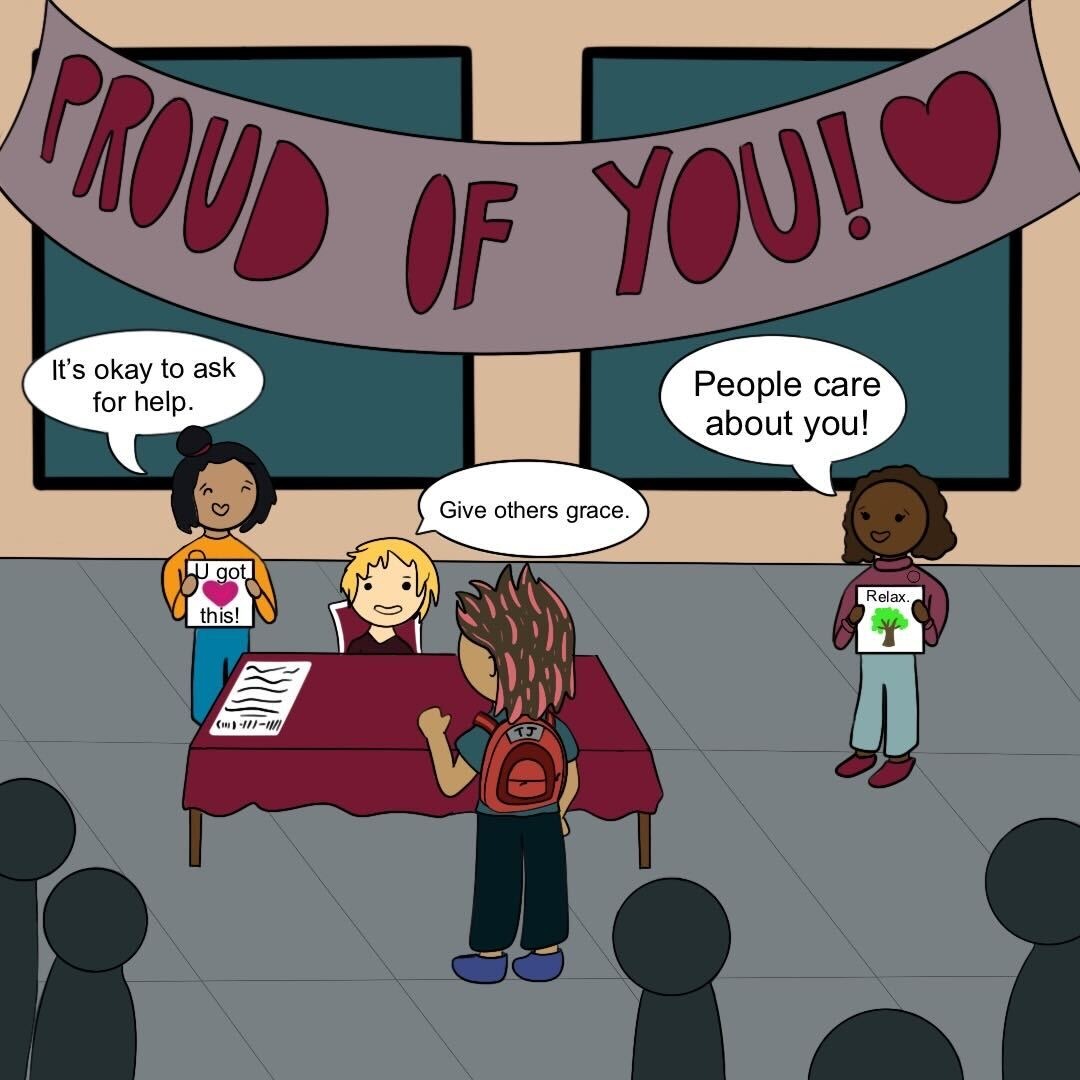A student will inevitably be late to class at least once. I remember the gut-wrenching twist in my stomach when I was late to my 8 a.m. classes. While there are many reasons for being late, like oversleeping or an outside job, campus transportation should not hinder a student’s ability to make it to class on time.
A glance at Texas State Transportation Service’s Twitter page shows a thread of replies from students who list their grievances with the bus service, even such as arriving late to their finals because of the bus system. Although the student bus fee of $95, which covers ride fare, is minuscule to the amount of tuition students pay each semester, this is money that is not being used efficiently.
To better meet the needs of students, the Bobcat Shuttle system should use this money to expand its routes, increase shuttle frequencies and create its own real-time bus tracking app.
As part of Texas State’s shuttle system Shuttle Rider Code, each Bobcat Shuttle is limited to a maximum of 20 riders at a time due to COVID-19 — this limitation reduces seating options by nearly 50%.
Because of capacity reduction, Transportation Services advises students to plan for delays. Additionally, while shuttles offer an estimated arrival time using a bus tracking system, Transportation Services states tracking times may not always be accurate.
In the eyes of students,there have been no added buses or stop frequencies to make up for wait time increases due to passenger limits. Heavy passenger routes with multiple stops can prohibit students waiting at the end of the route from boarding the bus, making them late to class.
Amelie Esquival, a studio art sophomore, expresses this disappointment with the shuttle system which, from her experience, has caused her to wait far longer for a ride than she had allotted the time for.
“The buses are only supposed to have a 10 minute wait time, but there have been times where me and multiple other people have waited 30 minutes,” Esquival says. “This isn’t blaming the drivers, by the way, I just think there should be updates for delays, etcetera.”
Adding more buses to established routes would increase frequencies and make wait times shorter. As a result, students will not have to wake up hours before class starts to wait for the bus nor be excessively late.
In the U.S., about 40% of undergraduates work at least 30 hours per week while in college. As of 2020, 60% of Texas State students worked while enrolled, and, although there are some jobs available on campus, there is a bigger market of jobs off campus, especially 11 minutes away at the San Marcos Outlet Mall.
The shuttle provides 11 main day routes during the fall, but only one goes to the outlet mall. This route, Route 68,runs on Saturdays during the fall and spring semesters from 11:05 a.m. to 5:50 p.m. However, this route does not run enough hours to accommodate a working college student.
To meet this need, the shuttle should expand its services to a 10-mile radius with longer hours both during the workweek and on weekends. This radius would include the outlet mall, Target, Walmart, the large H-E-B and any other apartments.
Because of the current lack of off-campus accessibility, students who live and work away from campus have to look for alternative means of transportation.
The number one option is to get a car, however, not every student can afford to buy, maintain or park their car on campus. In 2020, 18,777 parking permitswere purchased excluding restricted parking permits. The cheapest permit option being $115 and the most expensive set at $485. Not all students can afford these prices. Additionally, single-driven cars have a large environmental impact that goes beyond the scope of public transportation.
Thinking about the environmental impact we as a university have on global warming is important. The transportation sector accounts for 29% of U.S. greenhouse gas emissions. Cars can produce nearly one pound of global warming gases per mile traveled. Public transportation, such as buses, shows a 33% decrease in greenhouse emissions per mile traveled. Switching to public transportation from a private vehicle reduces the carbon footprint by 8.1% per person.
Texas State aims to be an environmentally conscious campus, surrounded by a biodiverse aquatic environment that is home to many endangered species susceptible to climate change. It is imperative that the Bobcat community thinks long-term about our impact on our local San Marcos home.
To move forward to a goal of sustainability, shuttle buses can run on a cleaner fuel source like biofuel or switch to a more fuel-efficient bus. By expanding service areas and bus frequencies, the university can lower the need for cars, thus decreasing our carbon footprint.
In an emailed statement, Transportation Services states the fuel for Bobcat Shuttles will cost $319,868 during the 2021-22 academic school year. This is with Bobcat Shuttle compiling with the Texas Commission on Environmental Quality TxLED regulations, which means shuttles run on a blend of biodiesel/diesel. Switching to fuel-efficient buses like electric or biofuel will decrease the high fueland maintenance cost over the long run.
In addition to these changes, Bobcat Shuttle should also revolutionize its real-time tracking app, which causes the issues that students, like Esquival, have encountered while commuting to class.
“My experience with the bus has been, overall, mixed. The schedule itself is unpredictable and inaccurate to the one online,” Esquival says. “Every time I asked someone what the schedule was, they would always say something really different. The one online has strict hours, but the buses often take breaks or end earlier on certain days, like Fridays, which also doesn’t help, considering [the services] end in the early afternoon when classes are usually still in session.”
Currently, Bobcat Shuttle utilizes DoubleMap, a third-party supposed real-time tracking app, but, as written in reviews, the app only tracks buses according to the provided bus schedule and not by real-time location.
For example, a bus might be stuck in 30-minute traffic, but the app will show the bus arriving according to schedule. Real-time tracking has been shownto make public transportation services more efficient, attractive and increase passenger satisfaction.
By creating a new app using real-time location geared to Bobcat Shuttle, transportation services can become more efficient. Using an app made by the university can also potentially provide job security to bus drivers by ensuring quality assurance. Even more, creating and programming this application could be a job or work-study open to students, allowing students the educational opportunity to gain a competitive advantage in technological industries. Students who know how to drive can even get on-campus jobs as bus drivers.
The Bobcat Shuttle system requires serious improvement and expansion to keep up with current student needs. However, through simple and effective developments, like increasing service areas, upping shuttle frequencies and relying on a better app, Bobcat Shuttle can meet those needs and even go beyond them.
– McKenzie Siller is a biochemistry sophomore.
The University Star welcomes Letters to the Editor from its readers. All submissions are reviewed and considered by the Editor-in-Chief and Opinion Editor for publication. Not all letters are guaranteed for publication.
Opinion: Bobcat Shuttle should expand its routes and improve its app
Mckenzie Siller, Opinion Contributor
July 30, 2021
0
Donate to The University Star
Your donation will support the student journalists of Texas State University. Your contribution will allow us to purchase equipment and cover our annual website hosting costs.
More to Discover


